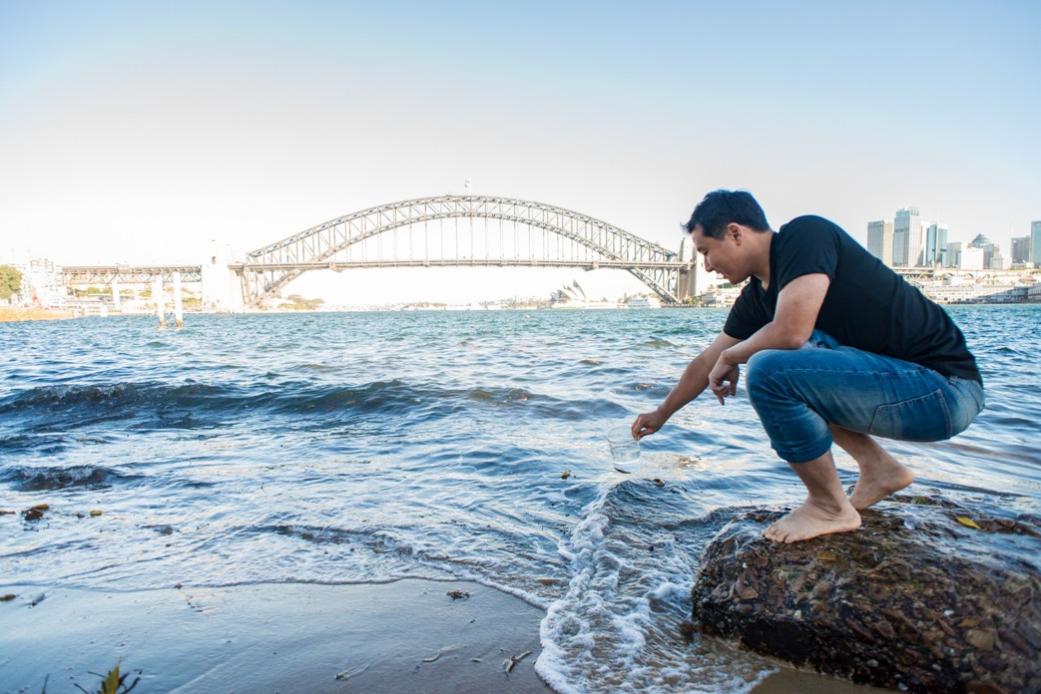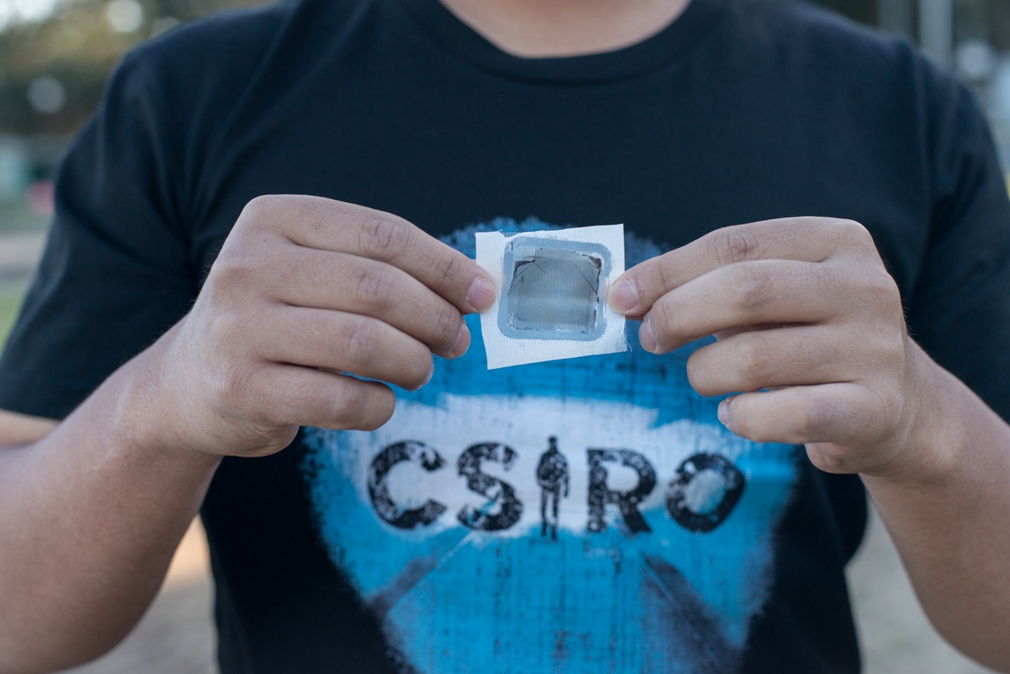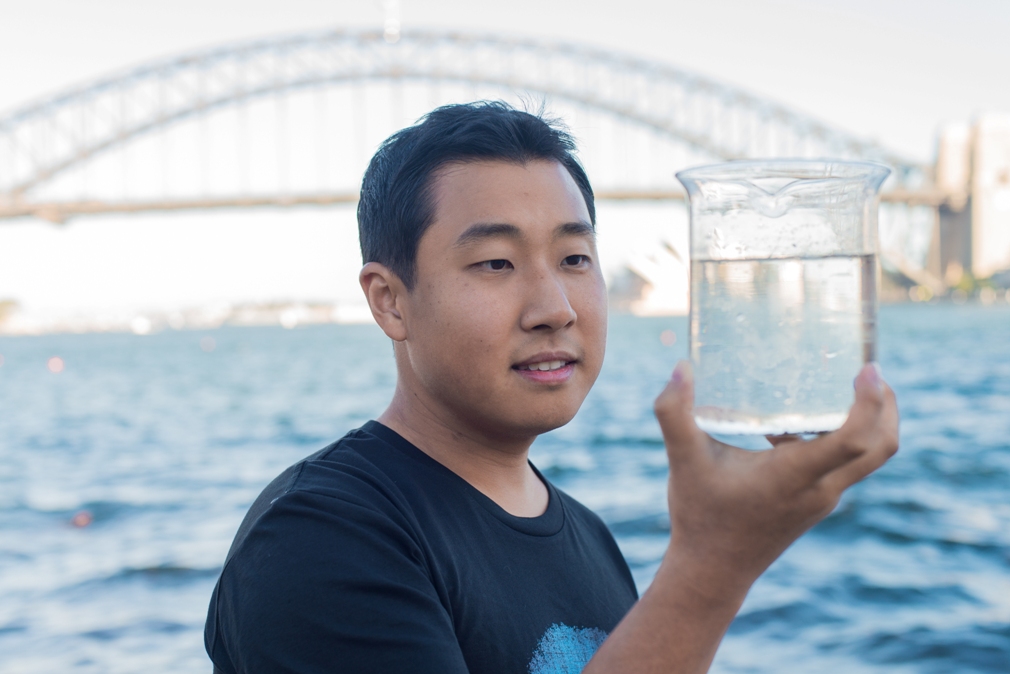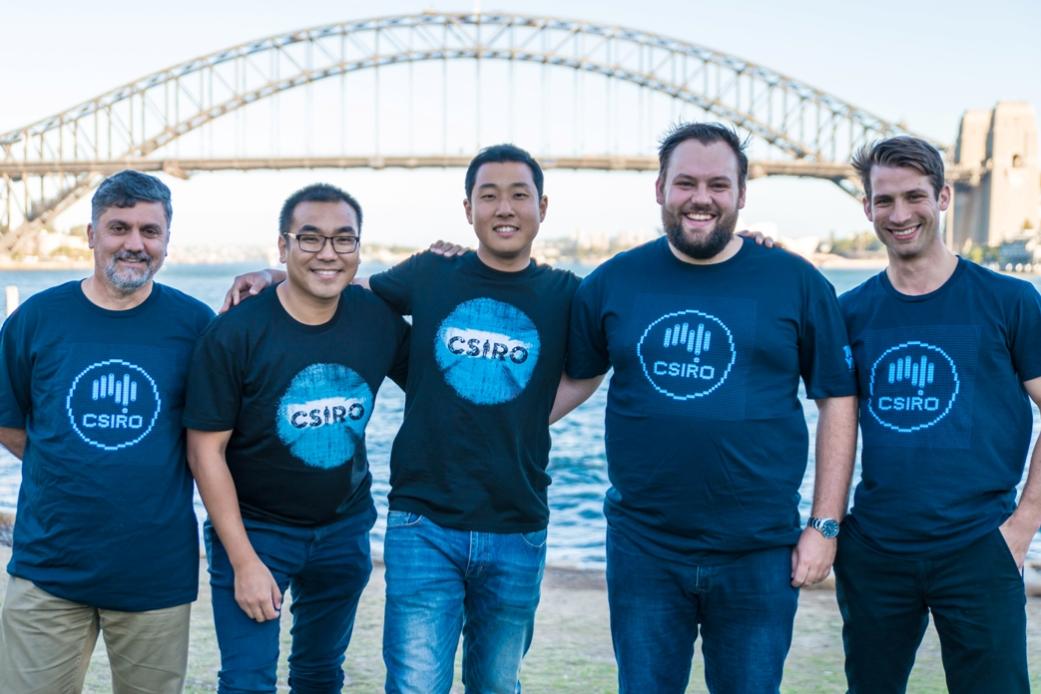February 18 - 24, 2018: Issue 348
Tiny Membrane Makes Sydney Harbour "Drinkable": New Graphair Technology Has Potential To Save Lives Worldwide

Dr Seo collecting a water sample from Sydney Harbour - photo courtesy CSIRO
Tiny Membrane Makes Sydney Harbour "Drinkable"
February 15, 2018: CSIRO
Sydney’s iconic harbour has played a starring role in the development of new CSIRO technology that could save lives around the world.
Using their own specially designed form of graphene, 'Graphair', CSIRO scientists have supercharged water purification, making it simpler, more effective and quicker.
The new filtering technique is so effective, water samples from Sydney Harbour were safe to drink after passing through the filter.
The breakthrough research was published today in Nature Communications.
"Almost a third of the world's population, some 2.1 billion people, don't have clean and safe drinking water," the paper's lead author, CSIRO scientist Dr Dong Han Seo said.
"As a result, millions – mostly children – die from diseases associated with inadequate water supply, sanitation and hygiene every year.
"In Graphair we've found a perfect filter for water purification. It can replace the complex, time consuming and multi-stage processes currently needed with a single step."

A Graphair sample
While graphene is the world’s strongest material and can be just a single carbon atom thin, it is usually water repellent.
Using their Graphair process, CSIRO researchers were able to create a film with microscopic nano-channels that let water pass through, but stop pollutants.
As an added advantage Graphair is simpler, cheaper, faster and more environmentally friendly than graphene to make.
It consists of renewable soybean oil, more commonly found in vegetable oil.
Looking for a challenge, Dr Seo and his colleagues took water samples from Sydney Harbour and ran it through a commercially available water filter, coated with Graphair.
Researchers from QUT, the University of Sydney, UTS, and Victoria University then tested and analysed its water purification qualities.
The breakthrough potentially solves one of the great problems with current water filtering methods: fouling.
Over time chemical and oil based pollutants coat and impede water filters, meaning contaminants have to be removed before filtering can begin. Tests showed Graphair continued to work even when coated with pollutants.
Without Graphair, the membrane's filtration rate halved in 72 hours.
When the Graphair was added, the membrane filtered even more contaminants (99 per cent removal) faster.
"This technology can create clean drinking water, regardless of how dirty it is, in a single step," Dr Seo said.
"All that's needed is heat, our graphene, a membrane filter and a small water pump. We're hoping to commence field trials in a developing world community next year."
CSIRO is looking for industry partners to scale up the technology so it can be used to filter a home or even town's water supply.
It's also investigating other applications such as the treatment of seawater and industrial effluents.

Dr Dong Han Seo
Anti-fouling graphene-based membranes for effective water desalination. Dong Han Seo, Shafique Pineda, Yun Chul Woo, Ming Xie, Adrian T. Murdock, Elisa Y. M. Ang, Yalong Jiao, Myoung Jun Park, Sung Il Lim, Malcolm Lawn, Fabricio Frizera Borghi, Zhao Jun Han, Stephen Gray, Graeme Millar, Aijun Du, Ho Kyong Shon, Teng Yong Ng & Kostya (Ken) Ostrikov. Nature Communicationsvolume 9, Article number: 683 (2018). Published online: 14 February 2018. Open Access. doi:10.1038/s41467-018-02871-3

Some of the researchers behind the paper - photo courtesy CSIRO